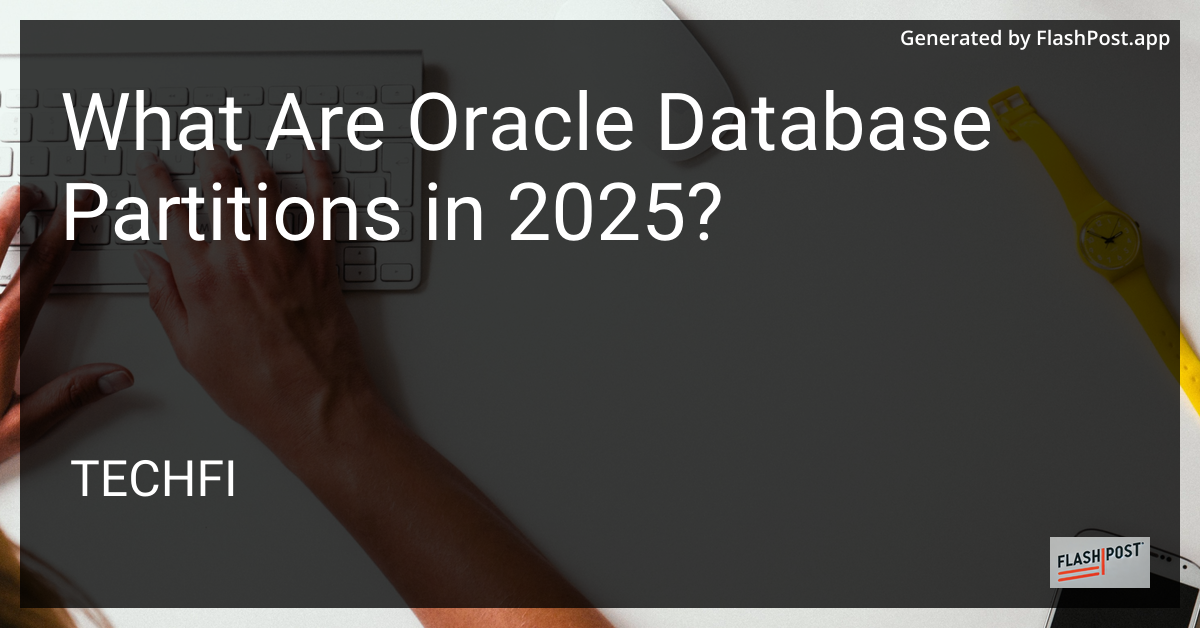What Are Oracle Database Partitions in 2025?

In an ever-evolving data management landscape, the importance of optimizing performance and maintainability in databases has never been more critical. As we look towards 2025, Oracle Database partitions remain an indispensable feature for efficiently managing large volumes of data. This article provides an SEO-optimized overview of Oracle Database partitions, their importance, and emerging trends for 2025.
Understanding Oracle Database Partitions
Oracle Database partitions divide large tables and indexes into smaller, more manageable pieces, improving query performance and data management efficiency. Partitioning allows databases to retrieve and manipulate subsets of data rapidly, facilitating faster data access and streamlined housekeeping tasks.
Types of Oracle Database Partitioning
Oracle offers several partitioning strategies, each designed to cater to different data organization and retrieval needs:
- Range Partitioning: Useful for partitioning data based on ranges of values, such as dates. This method is ideal for managing historical data.
- List Partitioning: This method partitions data based on discrete values. It's particularly beneficial for categorizing data by distinct attributes, such as customer regions.
- Hash Partitioning: Distributes data uniformly across partitions, ideal for ensuring balanced workloads and avoiding hotspots.
- Composite Partitioning: Combines methods such as range-range or range-list, offering more flexibility for complex data structures.
Benefits of Using Oracle Database Partitions
- Improved Performance: Partitioning can significantly enhance database performance by reducing query times and increasing transaction throughput.
- Simplified Management: Managing partitions is simpler than handling an entire database or table; it makes maintenance tasks like backups and restores more efficient.
- Enhanced Data Availability: Administrative operations can be performed on individual partitions, reducing downtime and ensuring data availability.
Trends in Oracle Database Partitioning for 2025
As we progress into 2025, several trends are anticipated to shape the landscape of Oracle Database partitioning:
- Increased Automation: Oracle is likely to introduce more sophisticated automation tools, simplifying partition management and facilitating real-time performance monitoring and optimization.
- Integration with Cloud Solutions: With the continuous shift towards cloud-based database solutions, Oracle partitions will become more seamlessly integrated with cloud technologies, enhancing scalability and flexibility.
- Advanced Analytics Capabilities: The fusion of Oracle partitions with advanced analytics will provide deeper insights into data distribution patterns, supporting more informed decision-making processes.
- Enhanced Security Measures: As cybersecurity remains a top priority, Oracle will likely introduce enhanced security features to protect data within partitions.
Conclusion
In 2025, Oracle Database partitions will continue to be a crucial component in optimizing database performance, managing large datasets, and facilitating efficient data organization. By leveraging various partitioning strategies, organizations can ensure their database management systems are both robust and adaptable to future challenges.
For further reading on related Oracle topics, consider exploring the following:
- How to Update a Column Using Oracle Trigger
- Oracle Database Backup Strategy
- Regular Expressions in Oracle ``` This article provides a concise overview of Oracle Database partitions, their benefits, and future trends, making it a valuable resource for readers interested in optimizing their Oracle databases.